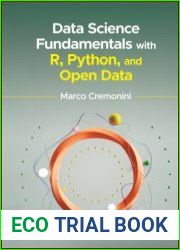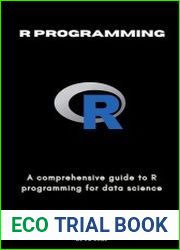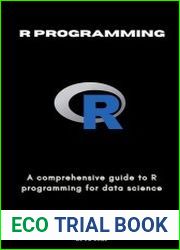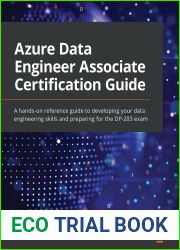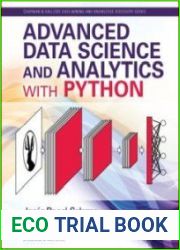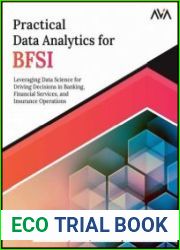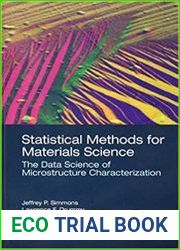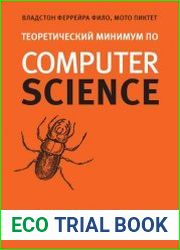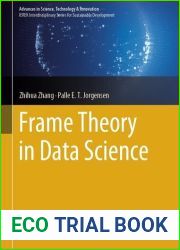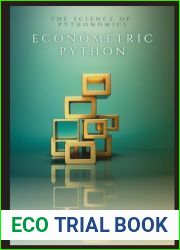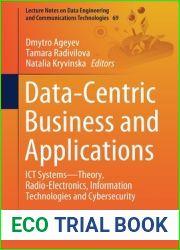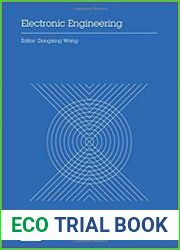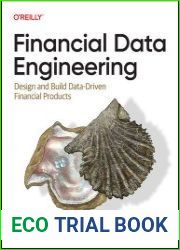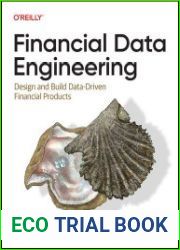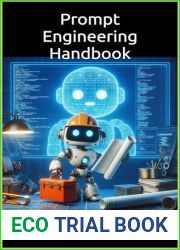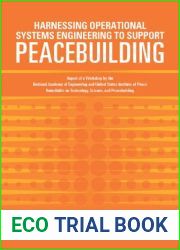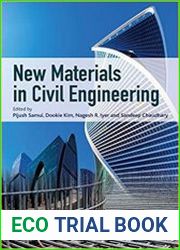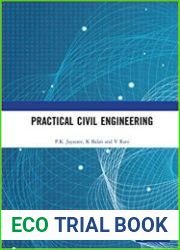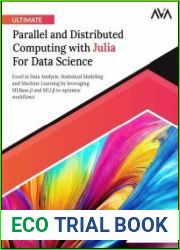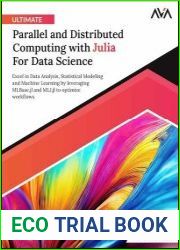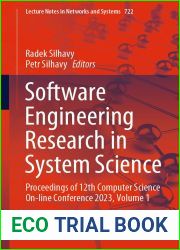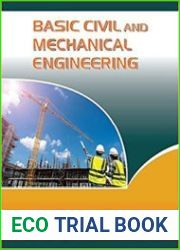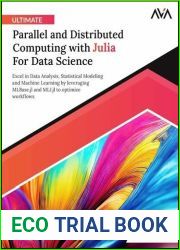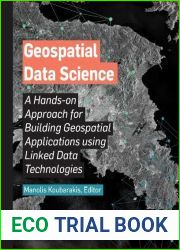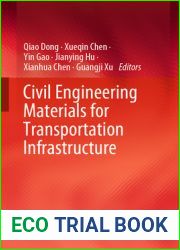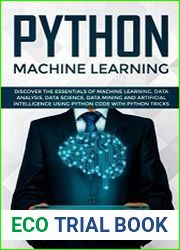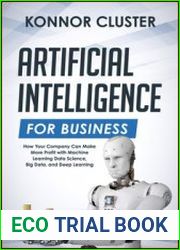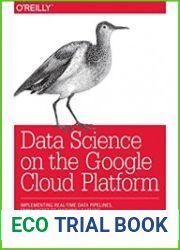
BOOKS - Data Science for Civil Engineering: A Beginner's Guide

Data Science for Civil Engineering: A Beginner's Guide
Author: Rakesh K. Jain
Year: May 10, 2023
Format: PDF
File size: PDF 8.6 MB
Language: English

Year: May 10, 2023
Format: PDF
File size: PDF 8.6 MB
Language: English

The book "Data Science for Civil Engineering: A Beginner's Guide" is an essential read for anyone looking to understand the intersection of technology, society, and sustainability. The author presents a comprehensive overview of the field of data science and its applications in civil engineering, highlighting the need for interdisciplinary approaches to address complex problems. The book begins by emphasizing the importance of understanding the evolution of technology and its impact on human history. The author posits that the development of modern knowledge is the key to survival in a rapidly changing world, and that data science can play a crucial role in this process. By providing a framework for understanding and analyzing large datasets, data science can help us better understand the world around us and make more informed decisions about our future. The first section of the book covers the basics of data science and essential mathematics, providing readers with a solid foundation for understanding the concepts and techniques presented later in the text. Topics such as probability distributions, statistical inference, and machine learning are explained in an accessible way, making it easy for readers to grasp even if they have no prior experience in these areas. The second section delves into the practical applications of data science in civil engineering, covering structural and environmental engineering, construction management, transportation systems, and water resource management. The author uses real-world examples to illustrate how data science can be used to solve pressing issues such as air and water pollution, traffic congestion, and climate change. Python programming libraries are also introduced, allowing readers to gain hands-on experience with implementing data science methods.
Книга «Data Science for Civil Engineering: A Beginner's Guide» (Наука о данных для гражданского строительства: руководство для начинающих) - это важное чтение для всех, кто хочет понять пересечение технологий, общества и устойчивости. Автор представляет всесторонний обзор области науки о данных и ее применения в гражданском строительстве, подчеркивая необходимость междисциплинарных подходов для решения сложных проблем. Книга начинается с того, что подчеркивается важность понимания эволюции технологии и ее влияния на историю человечества. Автор утверждает, что развитие современных знаний является ключом к выживанию в быстро меняющемся мире, и что наука о данных может играть решающую роль в этом процессе. Предоставляя основу для понимания и анализа больших наборов данных, наука о данных может помочь нам лучше понять мир вокруг нас и принимать более обоснованные решения о нашем будущем. Первый раздел книги охватывает основы науки о данных и основную математику, предоставляя читателям прочную основу для понимания концепций и методов, представленных позже в тексте. Такие темы, как распределение вероятностей, статистический вывод и машинное обучение, объясняются доступно, что облегчает читателям понимание, даже если у них нет предшествующего опыта в этих областях. Во втором разделе рассматриваются практические применения науки о данных в гражданском строительстве, включая структурное и экологическое проектирование, управление строительством, транспортные системы и управление водными ресурсами. Автор использует реальные примеры, чтобы проиллюстрировать, как наука о данных может быть использована для решения насущных проблем, таких как загрязнение воздуха и воды, пробки на дорогах и изменение климата. Также представлены библиотеки программирования Python, позволяющие читателям получить практический опыт реализации методов data science.
livre « Data Science for Civil Engineering : A Beginner's Guide » (La science des données pour le génie civil : un guide pour les débutants) est une lecture importante pour tous ceux qui veulent comprendre l'intersection de la technologie, de la société et de la durabilité. L'auteur donne un aperçu complet du domaine de la science des données et de son application au génie civil, soulignant la nécessité d'approches interdisciplinaires pour résoudre des problèmes complexes. livre commence par souligner l'importance de comprendre l'évolution de la technologie et son impact sur l'histoire humaine. L'auteur affirme que le développement des connaissances modernes est la clé de la survie dans un monde en mutation rapide et que la science des données peut jouer un rôle décisif dans ce processus. En fournissant une base pour comprendre et analyser de grands ensembles de données, la science des données peut nous aider à mieux comprendre le monde autour de nous et à prendre des décisions plus éclairées sur notre avenir. La première section du livre couvre les bases de la science des données et des mathématiques de base, offrant aux lecteurs une base solide pour comprendre les concepts et les méthodes présentés plus tard dans le texte. Des sujets tels que la distribution des probabilités, la conclusion statistique et l'apprentissage automatique sont expliqués, ce qui facilite la compréhension des lecteurs, même s'ils n'ont pas d'expérience préalable dans ces domaines. La deuxième section traite des applications pratiques de la science des données dans le génie civil, y compris la conception structurelle et environnementale, la gestion de la construction, les systèmes de transport et la gestion de l'eau. L'auteur utilise des exemples réels pour illustrer comment la science des données peut être utilisée pour résoudre des problèmes urgents tels que la pollution de l'air et de l'eau, les embouteillages et le changement climatique. s bibliothèques de programmation Python sont également présentées pour permettre aux lecteurs d'acquérir une expérience pratique de la mise en œuvre des méthodes de data science.
libro «Data Science for Civil Engineering: A Beginner's Guide» (La ciencia de los datos para la ingeniería civil: una guía para principiantes) es una lectura importante para cualquiera que quiera entender la intersección de la tecnología, la sociedad y la sostenibilidad. autor presenta una visión global del campo de la ciencia de datos y sus aplicaciones en la construcción civil, destacando la necesidad de enfoques interdisciplinarios para resolver problemas complejos. libro comienza subrayando la importancia de comprender la evolución de la tecnología y su impacto en la historia de la humanidad. autor sostiene que el desarrollo del conocimiento moderno es clave para sobrevivir en un mundo que cambia rápidamente, y que la ciencia de los datos puede jugar un papel crucial en este proceso. Al proporcionar una base para entender y analizar grandes conjuntos de datos, la ciencia de datos puede ayudarnos a entender mejor el mundo que nos rodea y tomar decisiones más informadas sobre nuestro futuro. La primera sección del libro cubre los fundamentos de la ciencia de datos y las matemáticas básicas, proporcionando a los lectores una base sólida para entender los conceptos y métodos presentados más tarde en el texto. Temas como la distribución de probabilidades, la conclusión estadística y el aprendizaje automático están disponibles, lo que facilita la comprensión de los lectores, incluso si no tienen experiencia previa en estas áreas. En la segunda sección se examinan las aplicaciones prácticas de la ciencia de los datos en la construcción civil, incluidos el diseño estructural y ambiental, la gestión de la construcción, los sistemas de transporte y la gestión del agua. autor utiliza ejemplos reales para ilustrar cómo se puede utilizar la ciencia de los datos para resolver problemas apremiantes como la contaminación del aire y el agua, los atascos de tráfico y el cambio climático. También se presentan las bibliotecas de programación Python, que permiten a los lectores obtener experiencia práctica en la implementación de técnicas de ciencia de datos.
O livro «Data Science for Civil Engineering: A Beginner's Guide» (Ciência de Dados para Construção Civil: Guia para Iniciantes) é uma leitura importante para todos os que querem entender a interseção entre tecnologia, sociedade e sustentabilidade. O autor apresenta uma revisão abrangente do campo da ciência dos dados e sua aplicação na construção civil, enfatizando a necessidade de abordagens interdisciplinares para lidar com problemas complexos. O livro começa enfatizando a importância de compreender a evolução da tecnologia e seus efeitos na história da humanidade. O autor afirma que o desenvolvimento do conhecimento moderno é a chave para sobreviver em um mundo em rápida mudança, e que a ciência de dados pode ser crucial nesse processo. Fornecendo uma base para a compreensão e análise de grandes conjuntos de dados, a ciência de dados pode nos ajudar a entender melhor o mundo ao nosso redor e tomar decisões mais aprofundadas sobre o nosso futuro. A primeira seção do livro abrange os fundamentos da ciência de dados e matemática básica, fornecendo aos leitores uma base sólida para compreender os conceitos e métodos apresentados mais tarde no texto. Temas como distribuição de probabilidades, conclusão estatística e aprendizagem de máquinas são explicados, o que facilita a compreensão dos leitores, mesmo que eles não tenham experiência anterior nessas áreas. A segunda seção aborda as aplicações práticas da ciência dos dados na construção civil, incluindo engenharia estrutural e ambiental, gestão da construção, sistemas de transporte e gestão dos recursos hídricos. O autor usa exemplos reais para ilustrar como a ciência de dados pode ser usada para resolver problemas urgentes, como poluição do ar e da água, trânsito rodoviário e mudanças climáticas. Também são apresentadas bibliotecas de programação Python que permitem que os leitores tenham experiência prática em técnicas data science.
Il libro «Data Science for Civil Engineering: A Beginner's Guide» (Scienza dei dati per l'edilizia civile) è una lettura importante per tutti coloro che desiderano comprendere l'intersezione tra tecnologia, società e sostenibilità. L'autore fornisce una panoramica completa del campo della scienza dei dati e della sua applicazione nell'edilizia civile, sottolineando la necessità di approcci multidisciplinari per affrontare problemi complessi. Il libro inizia sottolineando l'importanza di comprendere l'evoluzione della tecnologia e il suo impatto sulla storia dell'umanità. L'autore sostiene che lo sviluppo della conoscenza moderna è la chiave per sopravvivere in un mondo in rapida evoluzione, e che la scienza dei dati può svolgere un ruolo cruciale in questo processo. Fornendo una base per la comprensione e l'analisi di grandi set di dati, la scienza dei dati può aiutarci a comprendere meglio il mondo intorno a noi e a prendere decisioni più fondate sul nostro futuro. La prima sezione del libro comprende le basi della scienza dei dati e la matematica di base, fornendo ai lettori una base solida per comprendere i concetti e i metodi presentati successivamente nel testo. Argomenti come la distribuzione delle probabilità, la conclusione statistica e l'apprendimento automatico sono disponibili, rendendo i lettori più facili da comprendere, anche se non hanno esperienza precedente in queste aree. La seconda sezione affronta le applicazioni pratiche della scienza dei dati nell'edilizia civile, tra cui progettazione strutturale e ambientale, gestione delle costruzioni, sistemi di trasporto e gestione delle risorse idriche. L'autore utilizza esempi reali per illustrare come la scienza dei dati può essere utilizzata per risolvere problemi urgenti come l'inquinamento dell'aria e dell'acqua, il traffico stradale e il cambiamento climatico. Presentate anche le librerie di programmazione Python, che consentono ai lettori di acquisire un'esperienza pratica sui metodi data science.
Das Buch „Data Science for Civil Engineering: A Beginner's Guide“ ist eine wichtige ktüre für alle, die die Schnittstelle von Technologie, Gesellschaft und Nachhaltigkeit verstehen wollen. Der Autor gibt einen umfassenden Überblick über das Feld der Datenwissenschaft und ihre Anwendung im Bauingenieurwesen und betont die Notwendigkeit interdisziplinärer Ansätze zur Lösung komplexer Probleme. Das Buch beginnt mit der Betonung der Bedeutung des Verständnisses der Entwicklung der Technologie und ihrer Auswirkungen auf die Geschichte der Menschheit. Der Autor argumentiert, dass die Entwicklung des modernen Wissens der Schlüssel zum Überleben in einer sich schnell verändernden Welt ist und dass die Datenwissenschaft eine entscheidende Rolle in diesem Prozess spielen kann. Durch die Bereitstellung einer Grundlage für das Verständnis und die Analyse großer Datensätze kann Data Science uns helfen, die Welt um uns herum besser zu verstehen und fundiertere Entscheidungen über unsere Zukunft zu treffen. Der erste Abschnitt des Buches behandelt die Grundlagen der Datenwissenschaft und der grundlegenden Mathematik und bietet den sern eine solide Grundlage für das Verständnis der Konzepte und Methoden, die später im Text vorgestellt werden. Themen wie Wahrscheinlichkeitsverteilung, statistische Inferenz und maschinelles rnen werden erläutert, was den sern das Verständnis erleichtert, auch wenn sie keine Vorkenntnisse in diesen Bereichen haben. Der zweite Abschnitt befasst sich mit den praktischen Anwendungen der Datenwissenschaft im Bauingenieurwesen, einschließlich der baulichen und ökologischen Gestaltung, des Baumanagements, der Verkehrssysteme und des Wassermanagements. Der Autor veranschaulicht anhand von realen Beispielen, wie Datenwissenschaft genutzt werden kann, um drängende Probleme wie Luft- und Wasserverschmutzung, Verkehrsstaus und Klimawandel anzugehen. Außerdem werden Python-Programmierbibliotheken vorgestellt, die es den sern ermöglichen, praktische Erfahrungen mit der Implementierung von Data-Science-Methoden zu sammeln.
Książka „Data Science for Civil Engineering: A Beginner's Guide” jest ważnym lekturą dla każdego, kto chce zrozumieć skrzyżowanie technologii, społeczeństwa i zrównoważonego rozwoju. Autor przedstawia kompleksowy przegląd dziedziny danych i ich zastosowania w inżynierii lądowej, podkreślając potrzebę interdyscyplinarnych podejść do rozwiązywania złożonych problemów. Książka zaczyna się od podkreślenia znaczenia zrozumienia ewolucji technologii i jej wpływu na historię człowieka. Autor twierdzi, że rozwój nowoczesnej wiedzy jest kluczem do przetrwania w szybko zmieniającym się świecie i że nauka o danych może odgrywać kluczową rolę w tym procesie. Dzięki stworzeniu ram dla zrozumienia i analizy dużych zbiorów danych, nauka o danych może pomóc nam lepiej zrozumieć otaczający nas świat i podjąć bardziej świadome decyzje na temat naszej przyszłości. Pierwsza część książki obejmuje podstawy nauki o danych i matematyki podstawowej, zapewniając czytelnikom solidne podstawy do zrozumienia koncepcji i metod przedstawionych później w tekście. Tematy takie jak dystrybucja prawdopodobieństwa, wnioskowanie statystyczne i uczenie maszynowe są łatwo wyjaśnione, co ułatwia czytelnikom zrozumienie, nawet jeśli nie mają wcześniejszego doświadczenia w tych dziedzinach. Druga sekcja bada praktyczne zastosowania danych w inżynierii lądowej, w tym projektowanie strukturalne i środowiskowe, zarządzanie budownictwem, systemy transportowe i gospodarka wodna. Autor wykorzystuje przykłady w świecie rzeczywistym, aby zilustrować sposoby wykorzystania danych do rozwiązywania palących problemów, takich jak zanieczyszczenie powietrza i wody, zatory komunikacyjne i zmiany klimatu. Prezentowane są również biblioteki programowania Pythona, dzięki czemu czytelnicy mogą zdobyć praktyczne doświadczenie we wdrażaniu metod nauki o danych.
הספר ”Data Science for Civil Engineering: A Beginner's Guide” הוא ספר קריאה חשוב לכל מי שרוצה להבין את הצטלבות הטכנולוגיה, החברה והקיימות. המחבר מספק סקירה מקיפה של תחום מדעי המידע ויישומו בהנדסה אזרחית, תוך הדגשת הצורך בגישות בין-תחומיות לפתרון בעיות מורכבות. הספר מתחיל בכך שהוא מדגיש את החשיבות של הבנת התפתחות הטכנולוגיה והשפעתה על ההיסטוריה האנושית. המחבר טוען כי התפתחות הידע המודרני היא המפתח להישרדות בעולם המשתנה במהירות, וכי מדע המידע יכול למלא תפקיד קריטי בתהליך זה. על ידי מתן מסגרת להבנה וניתוח של מערכות מידע גדולות, מדע הנתונים יכול לעזור לנו להבין טוב יותר את העולם הסובב אותנו ולקבל החלטות יותר מושכלות לגבי העתיד שלנו. החלק הראשון של הספר סוקר את היסודות של מדעי הנתונים ומתמטיקה בסיסית, ומספק לקוראים יסוד מוצק להבנת המושגים והשיטות המוצגים מאוחר יותר בטקסט. נושאים כגון התפלגות הסתברות, הסקה סטטיסטית ולימוד מכונה מוסברים בקלות, דבר המקל על הקוראים להבין, גם אם אין להם ניסיון מוקדם בתחומים אלה. הסעיף השני בוחן יישומים מעשיים של מדעי המידע בהנדסה אזרחית, לרבות תכנון מבני וסביבתי, ניהול בנייה, מערכות תחבורה וניהול מים. המחבר משתמש בדוגמאות מהעולם האמיתי כדי להמחיש כיצד ניתן להשתמש במדעי המידע כדי להתמודד עם נושאים דחופים כגון זיהום אוויר ומים, גודש בתעבורה ושינויי אקלים. כמו כן מוצגות ספריות תכנות של פייתון, המאפשרות לקוראים לרכוש ניסיון מעשי ביישום שיטות מדעי המידע.''
"İnşaat Mühendisliği için Veri Bilimi: Bir Başlangıç Kılavuzu" kitabı, teknoloji, toplum ve sürdürülebilirliğin kesişimini anlamak isteyen herkes için önemli bir okumadır. Yazar, veri bilimi alanına ve inşaat mühendisliğindeki uygulamasına kapsamlı bir genel bakış sunarak, karmaşık problemleri çözmek için disiplinlerarası yaklaşımlara duyulan ihtiyacı vurgulamaktadır. Kitap, teknolojinin evrimini ve insanlık tarihi üzerindeki etkisini anlamanın önemini vurgulayarak başlıyor. Yazar, modern bilginin gelişiminin hızla değişen bir dünyada hayatta kalmanın anahtarı olduğunu ve veri biliminin bu süreçte kritik bir rol oynayabileceğini savunuyor. Büyük veri setlerini anlamak ve analiz etmek için bir çerçeve sağlayarak, veri bilimi çevremizdeki dünyayı daha iyi anlamamıza ve geleceğimiz hakkında daha bilinçli kararlar vermemize yardımcı olabilir. Kitabın ilk bölümü, veri biliminin ve temel matematiğin temellerini kapsar ve okuyuculara daha sonra metinde sunulan kavram ve yöntemleri anlamak için sağlam bir temel sağlar. Olasılık dağılımı, istatistiksel çıkarım ve makine öğrenimi gibi konular kolayca açıklanmakta ve bu alanlarda önceden deneyime sahip olmasalar bile okuyucuların anlamasını kolaylaştırmaktadır. İkinci bölüm, yapısal ve çevresel tasarım, inşaat yönetimi, ulaşım sistemleri ve su yönetimi dahil olmak üzere inşaat mühendisliğinde veri biliminin pratik uygulamalarını inceler. Yazar, veri biliminin hava ve su kirliliği, trafik sıkışıklığı ve iklim değişikliği gibi acil sorunların üstesinden gelmek için nasıl kullanılabileceğini göstermek için gerçek dünyadan örnekler kullanıyor. Python programlama kütüphaneleri de sunulur ve okuyucuların veri bilimi yöntemlerini uygulamada pratik deneyim kazanmalarını sağlar.
يعد كتاب «علوم البيانات للهندسة المدنية: دليل المبتدئين» قراءة مهمة لأي شخص يريد فهم تقاطع التكنولوجيا والمجتمع والاستدامة. يقدم المؤلف لمحة عامة شاملة عن مجال علم البيانات وتطبيقه في الهندسة المدنية، مع التأكيد على الحاجة إلى نهج متعددة التخصصات لحل المشكلات المعقدة. يبدأ الكتاب بتسليط الضوء على أهمية فهم تطور التكنولوجيا وتأثيرها على تاريخ البشرية. يجادل المؤلف بأن تطوير المعرفة الحديثة هو مفتاح البقاء في عالم سريع التغير، وأن علم البيانات يمكن أن يلعب دورًا حاسمًا في هذه العملية. من خلال توفير إطار عمل لفهم وتحليل مجموعات البيانات الكبيرة، يمكن أن يساعدنا علم البيانات في فهم العالم من حولنا بشكل أفضل واتخاذ قرارات أكثر استنارة حول مستقبلنا. يغطي القسم الأول من الكتاب أساسيات علم البيانات والرياضيات الأساسية، مما يوفر للقراء أساسًا صلبًا لفهم المفاهيم والطرق المقدمة لاحقًا في النص. يتم شرح موضوعات مثل توزيع الاحتمالات والاستدلال الإحصائي والتعلم الآلي بسهولة، مما يسهل على القراء فهمها، حتى لو لم يكن لديهم خبرة سابقة في هذه المجالات. ويبحث القسم الثاني التطبيقات العملية لعلوم البيانات في الهندسة المدنية، بما في ذلك التصميم الهيكلي والبيئي، وإدارة البناء، ونظم النقل، وإدارة المياه. يستخدم المؤلف أمثلة من العالم الحقيقي لتوضيح كيفية استخدام علم البيانات لمعالجة القضايا الملحة مثل تلوث الهواء والماء والازدحام المروري وتغير المناخ. يتم أيضًا تقديم مكتبات برمجة بايثون، مما يسمح للقراء باكتساب خبرة عملية في تنفيذ أساليب علم البيانات.
「土木工程數據科學:初學者指南」一書是任何想要了解技術,社會和可持續性交叉點的人的重要閱讀。作者全面回顧了數據科學及其在土木工程中的應用,強調需要跨學科的方法來解決復雜的問題。這本書首先強調了了解技術的發展及其對人類歷史的影響的重要性。作者認為,現代知識的發展是在快速變化的世界中生存的關鍵,數據科學在這一過程中可以發揮關鍵作用。通過提供理解和分析大型數據集的基礎,數據科學可以幫助我們更好地了解我們周圍的世界,並就我們的未來做出更明智的決定。該書的第一部分涵蓋了數據科學的基礎和基本數學,為讀者提供了了解後來在文本中提出的概念和方法的堅實基礎。可以解釋概率分布,統計推斷和機器學習等主題,即使讀者沒有這些領域的經驗,也更容易理解。第二節探討了數據科學在土木工程中的實際應用,包括結構和環境設計,建築管理,運輸系統和水管理。作者使用真實的例子來說明如何利用數據科學來解決緊迫的問題,例如空氣和水汙染,交通擁堵和氣候變化。還介紹了Python編程庫,使讀者能夠獲得實現數據科學技術的實踐經驗。










